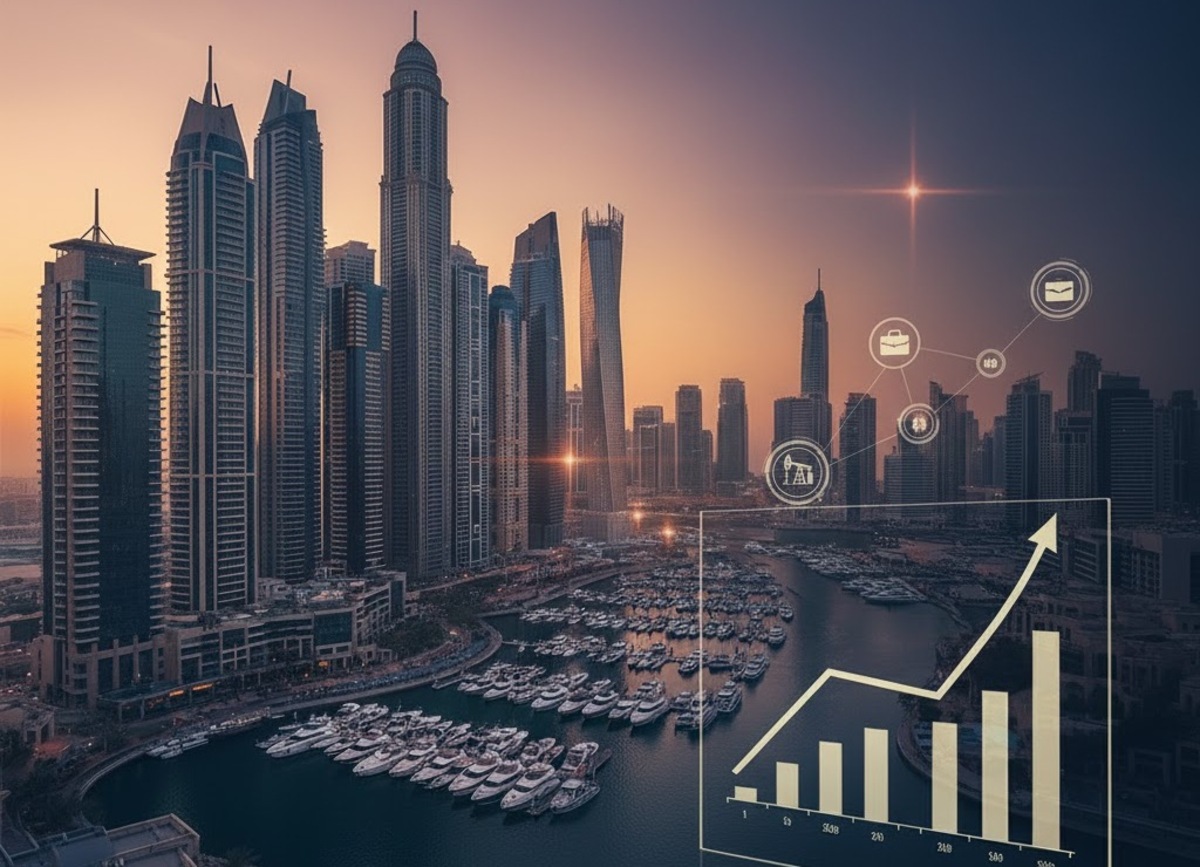Dubai Marina continues to register substantial volumes of completed transactions and remains one of Dubai’s top-performing communities in terms of both activity and value. Market platforms that aggregate Dubai Land Department (DLD) and broker data show thousands of transactions in Marina over the trailing 12 months and an elevated average sale price per unit compared with citywide apartment averages. For example, aggregated transaction feeds report average prices per apartment in Marina measured in the millions of dirhams and a price-per-square-foot figure materially above many other districts.
This transactional intensity is visible both in the number of transfers recorded in official and broker feeds and in the mix of closed sales: from studios and one-bedroom units up to high-end 3–4 bedroom apartments and penthouses. The diversity of sold units — ready inventory and secondary market resales — supports a sustained level of absorption that underpins upward price pressure.
Key drivers behind the price rise
Several interrelated drivers explain why prices in Dubai Marina have been rising:
- Strong buyer demand and diverse buyer profile. Dubai Marina attracts both end-users (young professionals and families seeking waterfront living) and international investors looking for rental yields and capital appreciation. The area’s lifestyle offer (marina promenade, proximity to JBR beaches, dining and retail) keeps demand steady even when other segments slow. Market reports note strong foreign demand and growing transaction values citywide, which feed into premium communities like Marina.
- Relative scarcity of prime waterfront stock and brand perception. Quality waterfront apartments with marina/sea views are a limited resource; scarcity combined with established prestige sustains pricing power. New supply often competes at upper tiers, but existing prime units (ready and resale) command price premiums because of location and finished quality. Broker community reports and property portals consistently show Marina’s average price per sqft among the highest for apartment clusters in Dubai.
- Macro tailwinds and policy support. Broader Dubai-level factors — population inflows, tourism recovery, relaxed residency/investor visa rules, and strong transaction volumes recorded by DLD — create market momentum. Official transaction tallies and market analyses point to elevated sales volumes and higher aggregate values in recent periods, which push capital values up in sought-after micro-markets.
- Infrastructure and amenity upgrades. Ongoing or planned infrastructure projects (transport links, promenades, new retail/leisure developments) increase a neighbourhood’s attractiveness and are often priced in by buyers ahead of completion. Proximity to new or improved amenities raises buyers’ willingness to pay, especially for ready homes with immediate access.
Evidence, implications for buyers and concluding outlook
Evidence summary. Multiple data sources corroborate both the upward trajectory of prices and sustained sales activity in Dubai Marina: broker transaction trackers and community reports publish average sale prices and price-per-sqft benchmarks that are consistently above many other Dubai localities; DLD transaction summaries confirm strong citywide sales volumes that feed demand into prime districts. For instance, community reports in 2025 cite average Marina sale prices in the multi-million dirham range and price-per-sqft figures notably higher than the Dubai average.
Implications for buyers and investors.
- Short-term buyers seeking immediate occupancy should expect to pay a premium for waterfront and ready-to-move-in units; negotiation leeway is typically narrower in the most desirable pockets. (See broker listings and recent transfers.)
- Long-term investors benefit from Marina’s proven track record of liquidity and rental demand, but must weigh price entry levels against expected yield and wider macro risks (new supply pipeline, interest-rate shifts). Citywide cautionary notes from financial press remind that rapid rallies can correct, so position sizing and diversification remain important.
Outlook. Given the combination of sustained transaction activity, limited premium waterfront supply and favorable macro drivers, Dubai Marina is likely to remain a price-resilient micro-market in the near term. However, buyers should monitor: (1) the incoming supply pipeline across Dubai (which can moderate price growth), (2) mortgage and lending conditions, and (3) changes in investor sentiment from key foreign markets. A balanced approach — verifying recent sold comparables, checking DLD transfer records for the precise unit type, and factoring in yield expectations — will help make a data-driven purchase decision.
For a broader perspective on how lifestyle and infrastructure differences shape property trends across the Emirates, read our related article “Life in Abu Dhabi vs. Dubai: Advantages, Infrastructure, and Leisure.” It explores how each city’s pace of life, amenities, and leisure options influence long-term investment value and living preferences.
